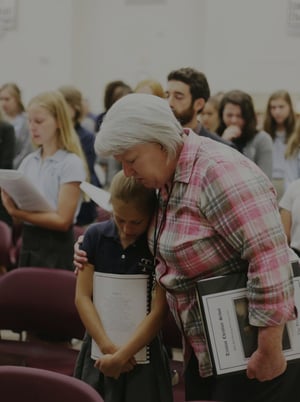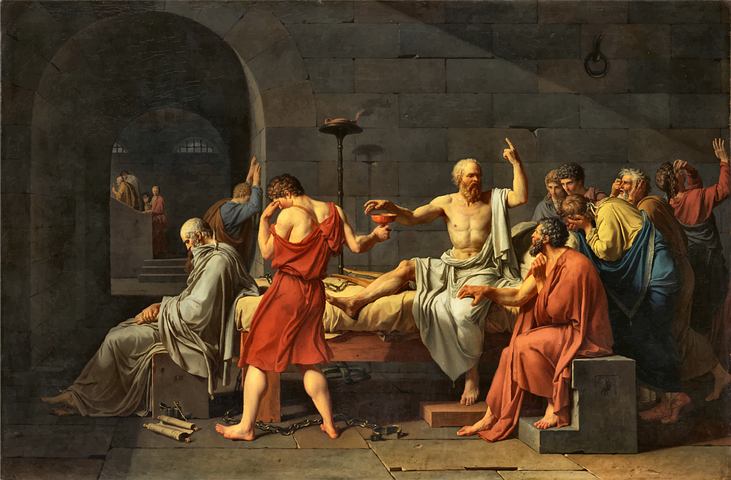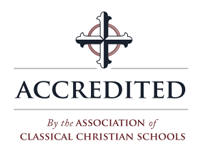As we saw last week, the modern grade scale is a fairly recent development in education and not one that has a long history of success or stability. This week we will look at how grades are perceived to function which has important implications for a Christian classical school.
The purpose of grades in a classroom, under the A–F system, is to pass judgment through a numerical evaluation. This gives the notion of impartiality and objectivity while mitigating the force of the judgment. We pass judgment every day, of course, regarding what shoes to wear, what route to take to work, and even what to say to our boss. Judgment is an inescapable part of the human experience. But there is no denying: we do not like feeling “judged.”
Read More
Topics:
Blog Posts,
Classical Education,
True Education,
Teaching,
Grades,
Virtue
Imagine you are a young pitcher, standing on the mound of your first Varsity baseball practice. You throw the ball to the catcher, and your coach proceeds to tell you that it was a “C+” pitch. What would you think? The example seems ludicrous to us because we know what the young man needs: pointed, specific guidance so that he can improve the pitch. We know intuitively that the letter, in this case, is unhelpful.
Now imagine the same scenario from a slightly different angle. You are the coach. As you approach the mound and begin explaining to the student how to use their shoulders as they throw, you are suddenly interrupted. “Yeah, but did I pass, Coach?” You can imagine the frustration in this similarly absurd example. “A student would never say that!” you think to yourself. And you’re right; they would not. Again, this is intuitive; there doesn’t even seem a need to explain it. Similar scenarios could be played out ad nauseum, with different actors substituted in to show that applying a percentage system of grading to life is unhelpful at best and downright dehumanizing at worst. So why does this same proposal meet with such hesitancy when applied to the classroom?
Read More
Topics:
Blog Posts,
Classical Education,
True Education,
Teaching,
Grades,
Virtue
What possible connection could there be between an ancient Greek teaching method, learning experienced shared by Trinitas students, and how intentional parents can train thoughtful children?
First the answer to the question and then an explanation. The connection is this: the pursuit and apprehension of Truth.
Read More
Topics:
Blog Posts,
History,
Classical Education,
Teaching
It's easy to assume that because classical Christian schools like Trinitas are not publicly-funded, government schools, they must be substantially the same as other private Christian schools of which there are many in our area. This understanding, however, is fundamentally flawed. Since its inception in 1999, Trinitas has maintained a commitment to a classical approach to Christian education which has resulted in the school being accredited by the Association of Classical Christian Schools (ACCS). To aid in understanding the differences between traditional Christian schools and classical Christ-centered schools like Trinitas, consider the following indicators of a classical approach to education.
Read More
Topics:
Blog Posts,
Classical Education,
True Education,
Teaching,
Truth, Goodness, and Beauty
We are continuing our series intended to remind what the goals of classical Christian education are, why those goals are good for the world, and how we pursue the goals of classical Christian education at Trinitas. I began this series with a metaphor about traveling and the questions one might ask oneself while traveling on a particular journey. Continuing that metaphor, now I set out to answer the question how do we get there? This is a big question, and it will take time to unpack even the merest tip of the iceberg.
Read More
Topics:
Blog Posts,
School Life,
Classical Education,
Teaching
In case you haven’t noticed, children do things adults don’t; for example, children run. They just run to run, not to go anywhere or for any reason, but just for the sheer pleasure of running. They will also pretend-play with just about any item they find. A stick becomes a Greek sword, a jacket is shaped to make a baby’s blanket, and sofa cushions become a fort.
Read More
Topics:
Blog Posts,
School Life,
Teaching
 We began our school year at Trinitas last Thursday with an orientation day. It was delightful to see all of the new and returning students hurrying in with their new binders and books and backpacks, all excited for the year ahead. Seeing how much all of the returning students have grown over the summer break is always bittersweet—exciting because they are slowly but surely becoming grown-up human beings, and sad because we so love to the cling to the cutest, sweetest, youngest version of them. Parents do so love to reminisce about the history of their children. Trinitas teachers love to reminisce about the history of those children too. At a school like Trinitas, we get to watch them grow from four-year-olds to eighteen-year-olds. That’s a lot of history.
We began our school year at Trinitas last Thursday with an orientation day. It was delightful to see all of the new and returning students hurrying in with their new binders and books and backpacks, all excited for the year ahead. Seeing how much all of the returning students have grown over the summer break is always bittersweet—exciting because they are slowly but surely becoming grown-up human beings, and sad because we so love to the cling to the cutest, sweetest, youngest version of them. Parents do so love to reminisce about the history of their children. Trinitas teachers love to reminisce about the history of those children too. At a school like Trinitas, we get to watch them grow from four-year-olds to eighteen-year-olds. That’s a lot of history.
Read More
Topics:
Blog Posts,
School Life,
Teaching
Sometime around the end of the nineteenth century, American colleges and universities began to use a form of grading students that resembles what most high schools, colleges, and universities still use today: A, B, C, D, and F. The grades are intended to be a way of measuring and reporting a student’s performance on a given assignment or within a given subject over a period of time. They are useful for that task, but far from perfect. At Trinitas we also grade students using a variation of the aforementioned marks.
Read More
Topics:
Blog Posts,
Classical Education,
True Education,
Teaching,
Grades





-1.png)
 We began our school year at Trinitas last Thursday with an orientation day. It was delightful to see all of the new and returning students hurrying in with their new binders and books and backpacks, all excited for the year ahead. Seeing how much all of the returning students have grown over the summer break is always bittersweet—exciting because they are slowly but surely becoming grown-up human beings, and sad because we so love to the cling to the cutest, sweetest, youngest version of them. Parents do so love to reminisce about the history of their children. Trinitas teachers love to reminisce about the history of those children too. At a school like Trinitas, we get to watch them grow from four-year-olds to eighteen-year-olds. That’s a lot of history.
We began our school year at Trinitas last Thursday with an orientation day. It was delightful to see all of the new and returning students hurrying in with their new binders and books and backpacks, all excited for the year ahead. Seeing how much all of the returning students have grown over the summer break is always bittersweet—exciting because they are slowly but surely becoming grown-up human beings, and sad because we so love to the cling to the cutest, sweetest, youngest version of them. Parents do so love to reminisce about the history of their children. Trinitas teachers love to reminisce about the history of those children too. At a school like Trinitas, we get to watch them grow from four-year-olds to eighteen-year-olds. That’s a lot of history.

